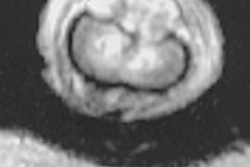NEW ORLEANS - Coronary angiography is the appropriate course of action for patients who suffer a heart attack, according to a presentation at the American Heart Association conference this week.
"There are very compelling reasons why the vast majority of patients should have an angiogram," said Dr. David Faxon, professor of medicine at the University of Chicago and president-elect of the AHA.
Speaking November 13 at the organization's 73rd annual scientific sessions, Faxon ticked off a list of reasons why clinicians should order angiograms for patients with an acute myocardial infarction (MI):
- Relative risk stratification. "In patients with uncomplicated myocardial infarctions, the general consensus of the American College of Cardiology and AHA guidelines is that noninvasive testing is appropriate," Faxon said. Recent studies have suggested that cardiac angiography provides better information than ultrasound or thallium exercise testing in these patients, he added.
- Primary angioplasty. "There is good evidence now that angioplasty is superior to lytic therapy," he said, citing studies which show the mortality rate among patients undergoing lytic therapy is 6.5%, compared with 4.4% who undergo angioplasty. He said there has been a shift toward using primary angiography and stent emplacement in treating patients with heart attacks, "and consequently a significant need for angiography."
- Rescue angioplasty. Faxon said the use of angioplasty in this arena remains controversial, but several small studies have shown the value of angioplasty following thrombolytic treatment of patients. Those studies indicate a reduction in death, re-infarction, and development of heart failure. Other studies, he said, showed a correlation between improved blood flow in the coronary arteries and the administration of thrombolysis and angioplasty, again suggesting a need for angiography.
- Open artery hypothesis. "There is growing evidence that opening the artery following acute myocardial infarction may in fact have value beyond salvaging the myocardium," he said. Studies show that opening the artery results in improved outcomes after 30 days compared with patients whose arteries remained closed. One small study suggests that opening the artery may have an effect in preventing heart failure, Faxon said. With patients who are in cardiac shock or who have recurrent ischemia, angiography again is necessary to determine the best treatment options.
"If you add up all the indications, between 60% and 80% of patients with acute myocardial infarctions would be eligible for angiography," Faxon said.
He said angiography utilization can be affected by geographical differences, gender differences, the nature of on-site facilities, and specialty considerations.
A number of presentations at the upcoming RSNA conference will offer a different view on imaging MI: In an educational exhibit (0376CH-3), a group from Baltimore will review the mechanisms of contrast-enhanced MRI following a heart attack.
During the RSNA scientific sessions, radiologists from Germany will discuss how delayed contrast-enhanced MRI can determine the extent and severity of acute MI (1090). The aim of their study was to correlate cardiac enzymes as a marker of cell damage with contrast-enhanced MRI, they said.
Finally, investigators from Miami will discuss the contribution of nuclear cardiology to normal coronary angiographic rates in patients with suspected coronary artery disease (303).
By Edward SusmanAuntMinnie.com contributing writer
November 15, 2000
Let AuntMinnie.com know what you think about this story.
Copyright © 2000 AuntMinnie.com


.fFmgij6Hin.png?auto=compress%2Cformat&fit=crop&h=100&q=70&w=100)





.fFmgij6Hin.png?auto=compress%2Cformat&fit=crop&h=167&q=70&w=250)











